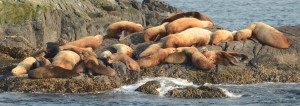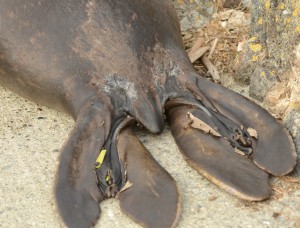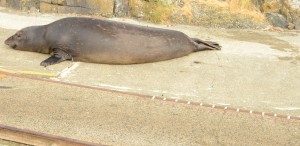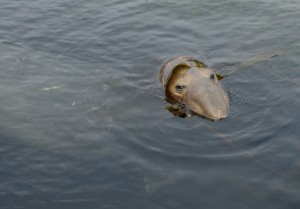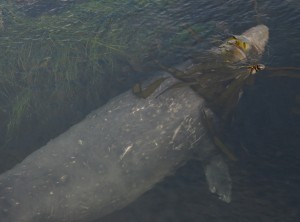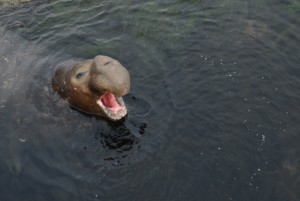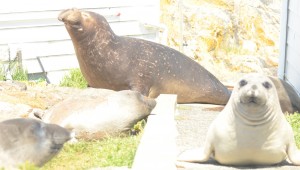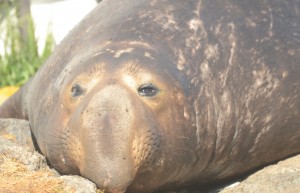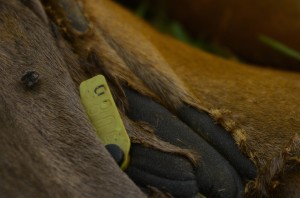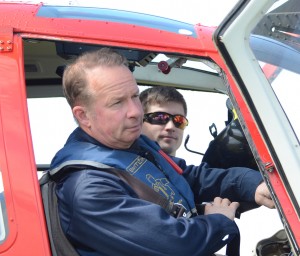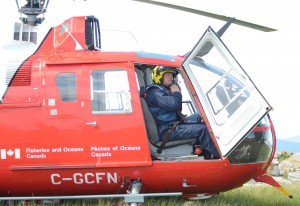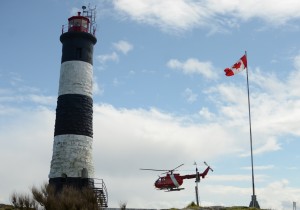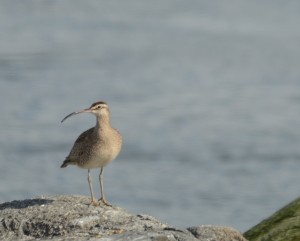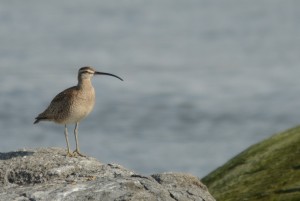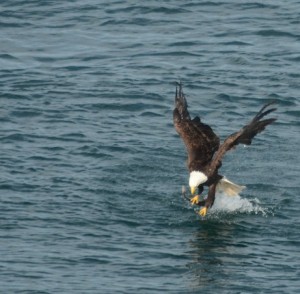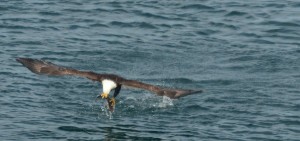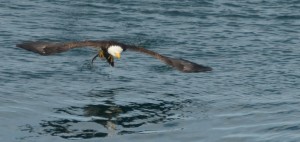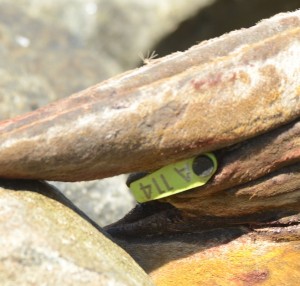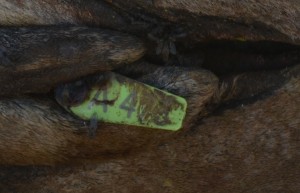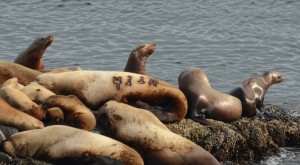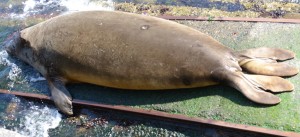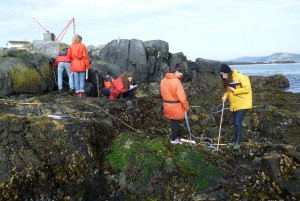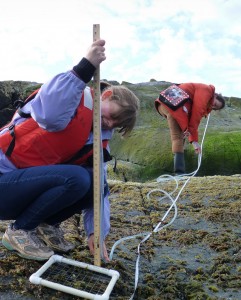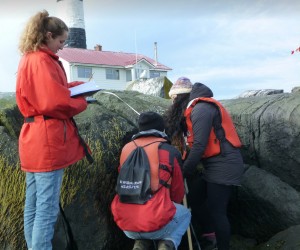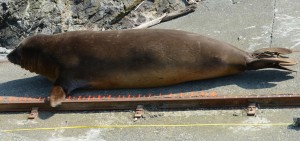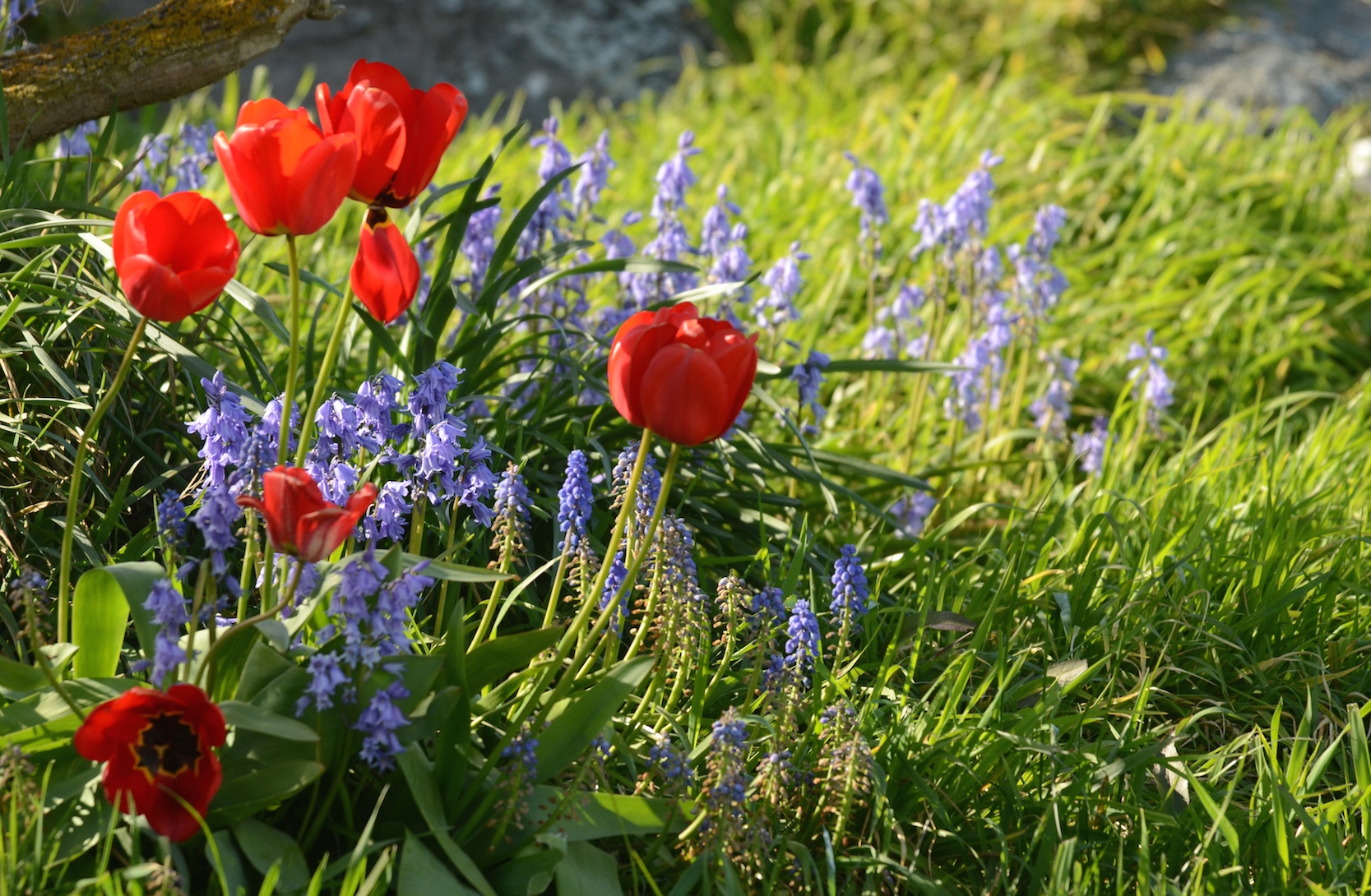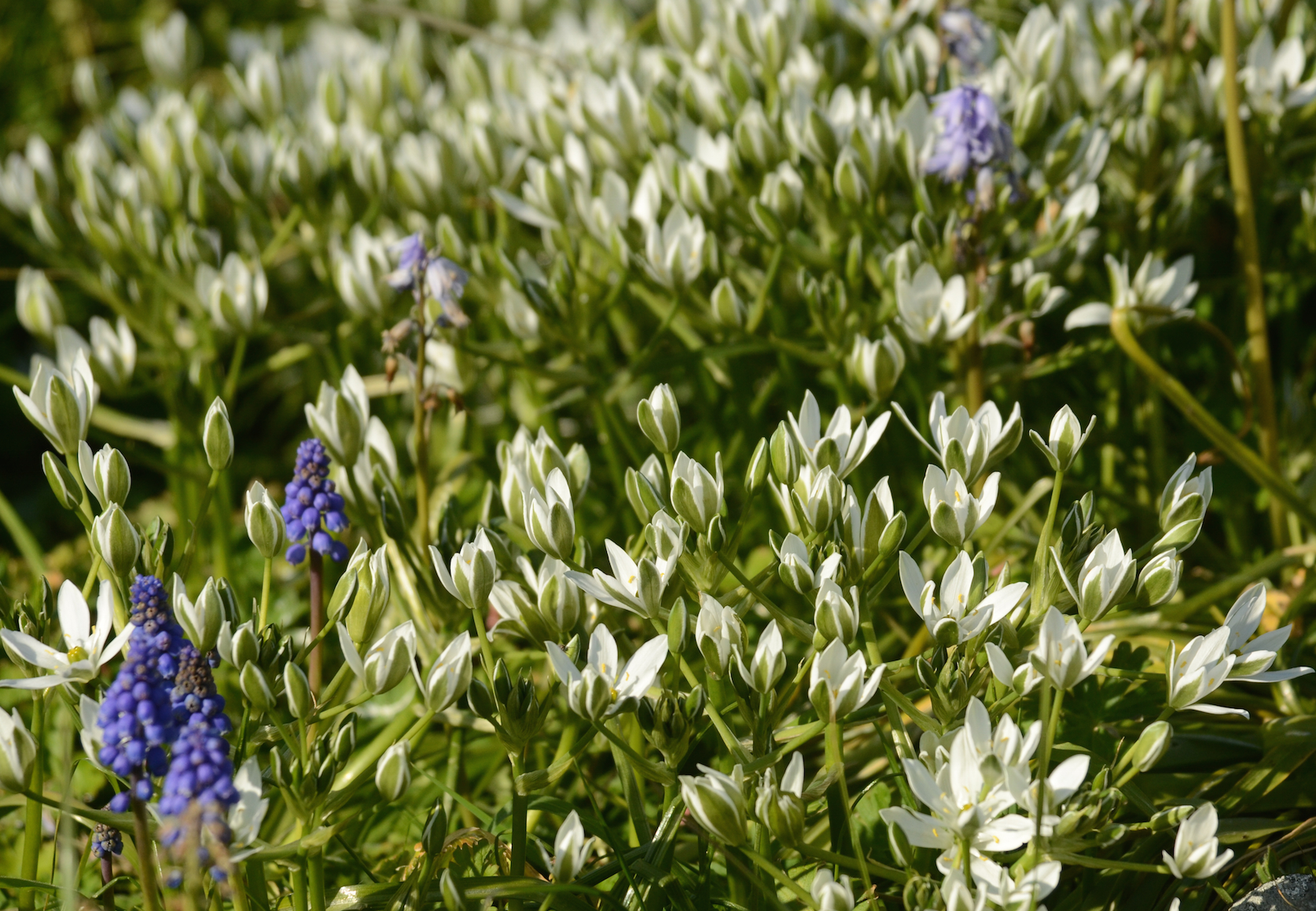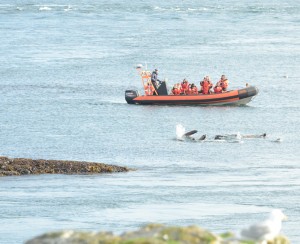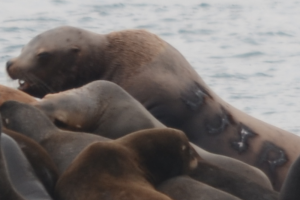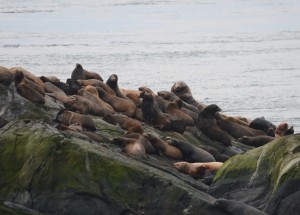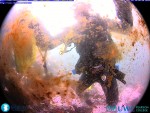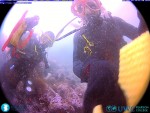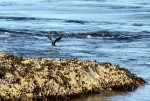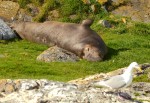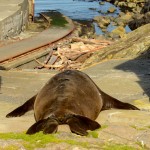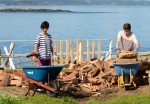During the early morning there were light winds from the north but it soon switched to west and blew 25 to 30 knots mid-morning. The wind dropped down to a lazy 5 to 10 from the west and swung through south to east and back again, during the rest of the afternoon. The barometer rose steadily all day and even though there were showers early on, the day ended in glorious sunshine with a 10 knot wind from the west, southwest. The forecast is for the wind to turn to east and bring more showers.
Five whale watching vessels were observed within the Ecological Reserve and they were all very respectful of the speed regulations although several were as close as 20-30 meters from the shoreline of Great Race. Two kayakers were noted in the Ecological Reserve in the late afternoon. Several halibut sports fishermen fished just outside the conservation area closed to fishing, respecting the boundary of the closed fishing area.
Casual, ecological observations were made in the inter-tidal at 0.9m and above today in the shelfing area just east of the derrick on the north side of Great Race. A widespread settlement event has occurred recently and juvenile barnacles (<1mm) carpet the mid- to upper inter-tidal area including any unoccupied rock and even occupied shells of sessile organisms like big, old California Mussels.
This population explosion will provide food for many whelks and opportunists and emphasizes incredible competition for space here in the intertidal. The more ephemeral algae of the high inter-tidal are starting to bleach out including some of the higher Porphyra spp or Pyropia spp (nori) and a small red that may be Rhodymenia sp. The following community of intertidal organisms in addition to those list above, were noted (in no particular order) in the area examined.
Enteroctopus dofleini Giant Pacific Octopus
Katherina tunicate Black Leather Chiton
Semibalanus cariosus Thatched Barnacle
Balanus glandula Acorn Barnacle
Pollicipes polymerus Gooseneck Barnacle
Mytilus californianus California Mussel
Gnorimosphaeroma sp. Sex changing Isopod
Lirabuccinum dirum Dire Whelk
Prasiola sp. Small green algae indicative of high nitrogen location
Ulva spp. Sea lettuce
Nucella spp. Whelk
Alaria marginata Winged Kelp
Anthopleura elegantissima Aggregating Anemone
Epiactus prolifera Brooding Sea Anemone
There were also at least four limpet species, several species of periwinkles, coralline algae, red algal turf and red crust.
Today there were 30 visitors. Catrin brought her first year biology students for a field trip and they were divided up into three working groups of eight students each. Erich from Victoria came with the group. Two volunteers from the College accompanied the group and Courtney drove them all out and back in Second Nature (six trips in total). Earlier I picked up Alex in the Race Rocks Whaler who is staying on. he was very helpful with all the landings, loadings and embarkations.
Other than working with all three groups of students which was a real treat, other chores were routine today. Some students, especially biology and marine science students really benefit from exposure to such a biodiverse and productive site as Race Rocks. Most students enjoyed the visit, many observed species they had never seen before and some even collected extensive data for next years individual investigations.
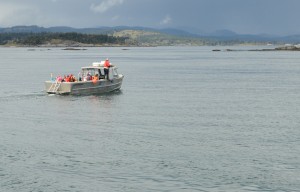
Bumpers come aboard as the last group of students head back to Pedder Bay aboard Second Nature.

